Copper is a common material in manufacturing, have you ever struggled to choose the right copper material? Did you know that in CNC machining, machining with different types of copper will have significantly different results? If you are looking for information about the differences and machining methods of different types of copper, then you have come to the right place.
This article will give you a detailed introduction to the different types of copper in CNC machining differences and corresponding machining skills. For manufacturers or individuals who need to perform precision copper machining , we believe this article will provide you with valuable help and guidance.
Let’s get started!
Basic classification of copper alloys
In the following content, we will explore the basic characteristics and applications of copper according to different composition, shape and function.
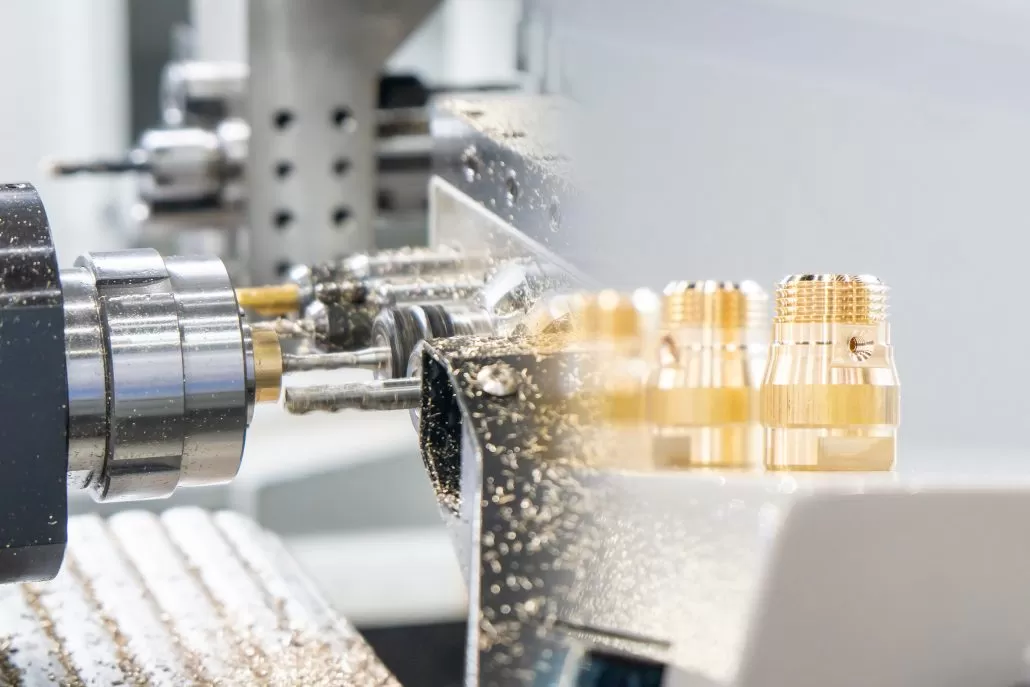
Classification by component
1.Pure copper: pure copper material with a copper content of 99.9% or higher, without other alloying elements.
2.Bronze alloy: An alloy of copper and tin (Sn), usually containing 5 to 25 percent tin.
3.Brass alloy: An alloy of copper and zinc (Zn), usually containing 10% to 40% zinc.
4.Aluminum bronze: An alloy of copper and aluminum (Al), often containing 5 to 12 percent aluminum.
5.Phosphorus bronze alloy: an alloy of copper and phosphorus (P), usually containing 0.1% to 0.5% phosphorus.
6.Zinc copper: an alloy of copper and zinc (Zn), usually containing 5% to 40% zinc.
Sort by shape
1.Plate: Flat-like copper material, often used to make plate components, circuit boards, etc.
2.Pipe: hollow tubular copper material, often used to make pipes, radiators, condensers, etc.
3.Rod: cylindrical copper material, often used to make bolts, pins, bearings, etc.
4.Wire: Thin, filamentary copper material, often used to make wire, winding, etc.
5.Profiles: Copper materials with a specific cross-section shape, such as corner materials, trough materials, T profiles, etc., are often used to make structural components, decorative materials, etc.
6.Castings: Copper parts formed by casting process, suitable for the manufacture of complex shapes and large parts.
classification by function
Copper alloy for electrical and thermal conduction:
1.Unalloyed copper: such as C11000 electrical copper, with excellent electrical and thermal conductivity properties.
2.Microalloying copper: Improve electrical and thermal conductivity by adding a small amount of alloying elements such as phosphorus and tin.
Structural copper alloy:
1.High strength copper alloy: such as aluminum bronze, nickel aluminum bronze, with high strength and toughness, suitable for structural parts.
2.High hardness copper alloy: such as beryllium copper, hardened copper, with good wear resistance and strength, suitable for tools and bearings.
Corrosion resistant copper alloy:
1.Tin brass: Added tin brass, with excellent corrosion resistance
2.Aluminum brass: Added aluminum brass, with good corrosion resistance and mechanical properties
Wear-resistant copper alloy:
1.Complex brass containing lead, tin, aluminum, manganese and other elements: has good wear resistance and friction properties
2.Aluminum bronze: Added aluminum bronze, with high hardness and wear resistance
Free cutting copper alloy:
1.Copper-lead alloy: such as C36000 free cutting brass, with good cutting performance.
2.Copper-tellurium alloy, copper-antimony alloy, etc. : adding elements such as tellurium and antimony to improve cutting performance.
Elastic copper alloy:
1.Antimony bronze: Added antimony bronze, with good elasticity and wear resistance
2.Aluminum bronze, beryllium bronze, titanium bronze, etc. : Add aluminum, beryllium, titanium and other elements, with excellent elastic and mechanical properties.
Damping copper alloy:
1.High manganese copper alloy: add high manganese element, has good damping performance
Art Copper Alloy:
1.Pure copper: The copper content is close to 100%, often used in art and decoration production
2.Simple single copper: such as C10100 copper oxide, with a special red appearance
3.Tin bronze, aluminum bronze, white copper, etc. : with different colors and textures
Commonly used CNC machining copper material grades
The following are some commonly used CNC machining copper material grades:
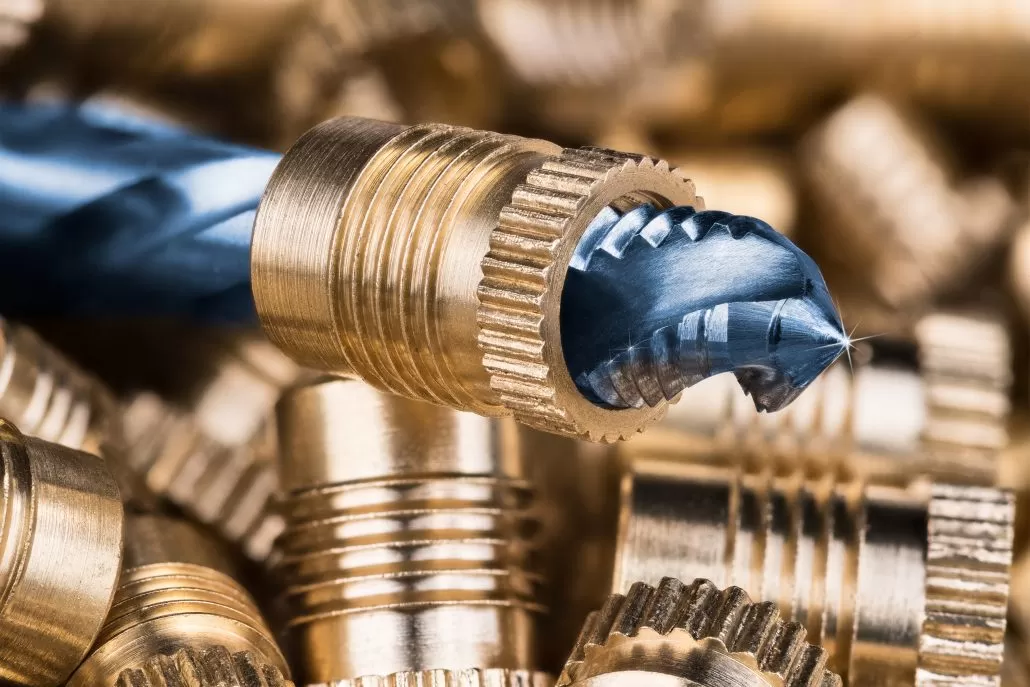
C10100
C10100 is a brand called OFHC (High Purity Oxygen Free Copper). It has a very high purity and is typically used in electronic and electrical components that require high conductivity.
C11000
C11000 is also an oxygen free copper grade, containing 0.04-0.12% oxides. It is harder than C10100 and also more corrosion-resistant. This copper material is typically used for parts that require high strength and low deformation.
C62300
Aluminum bronze, containing copper, aluminum, and manganese elements, has good corrosion resistance and high strength, and is commonly used in marine environments, such as marine engineering and shipbuilding.
C26000
C26000 is a grade containing brass, commonly used in the manufacturing of pipelines and joints due to its high elastic limit and good corrosion resistance. This copper material is also easy to process and can be used for CNC machining.
C93200
C93200 lead bronze, containing copper and lead elements, has excellent self-lubricating performance and wear resistance, suitable for manufacturing bearings and sliding parts.
C36000
C36000 is a self forging copper material that contains 3-4% lead. This copper material has excellent machining performance and is typically used for manufacturing small parts, brakes, and connectors.
For more information on other materials used in CNC machining, please see this article【Aluminum Alloy: Application Principle In CNC Machining】
Detailed comparison of different types of copper materials
As we mentioned above, these copper materials all have different characteristics. We will break down these differences into different parts to help you better understand them.
Copper is a common metal material with good conductivity, thermal conductivity, and corrosion resistance. The following are several common copper materials and their detailed comparison:
| Copper material | machining method | characteristic | Conductivity (MS/m) | Typical brand | application range |
|---|---|---|---|---|---|
| Pure copper | Milling, turning, drilling, etc | Suitable for high-precision part manufacturing, with good plasticity and machinability | 58 | C10100、C10200 | Electronic devices, circuit boards, wires, generators, etc |
| brass | Milling, turning, drilling, etc | Suitable for the manufacturing of decorations and precision parts, with good corrosion resistance | 28-44 | C26000、C28000 | Faucets, door handles, pipes, clocks, sculptures, etc |
| bronze | Milling, turning, drilling, etc | Suitable for applications with high requirements for durability and aesthetics | 7-15 | C51000、C52100 | Sculptures, clocks, musical instruments, bearings, gears, etc |
| copper-nickel | Milling, turning, drilling, etc | Suitable for applications with high requirements for marine environment and corrosion resistance | Dependent on alloy composition | C70600、C71500 | Ocean engineering, seawater treatment equipment, ship components, electrical connectors, etc |
| Phosphorous copper | Milling, turning, drilling, etc | Suitable for applications with high requirements for high conductivity and corrosion resistance | 50-60 | C52100、C54400 | Electrical contacts, electrical connectors, conductive elastic components, etc |
brass and bronze color difference
Brass and bronze are inherently non-ferrous metals. Please see the image below to see the color difference between them
Copper periodic table
Here are eight different types of copper alloys and their positions in the periodic table:
| types | Element symbols | Element Name | atomic number | atomic weight |
|---|---|---|---|---|
| Pure copper | Cu | copper | 29 | 63.546 |
| bronze alloys | Cu-Sn | tin | 50 | 118.71 |
| Brass alloy | Cu-Zn | zinc | 30 | 65.38 |
| Aluminum bronze alloy | Cu-Al | Aluminum | 13 | 26.982 |
| Phosphor Bronze Alloy | Cu-P | Phosphor | 15 | 30.974 |
| Nickel copper alloy | Cu-Ni | Nickel | 28 | 58.693 |
| Manganese bronze alloy | Cu-Mn | Manganese | 25 | 54.938 |
| chrome copper | Cu-Cr | chrome | 24 | 51.996 |
Differences in copper material properties
Different copper materials have some differences in performance and applicability. You will be provided with the relevant information next
brass
The color of brass is mostly yellow, but it can also be between yellow and red. Because brass has excellent corrosion resistance and electrical conductivity, it is relatively easy to process in CNC machining. Brass can be used for carving and engraving, as well as sandblasting and plating.
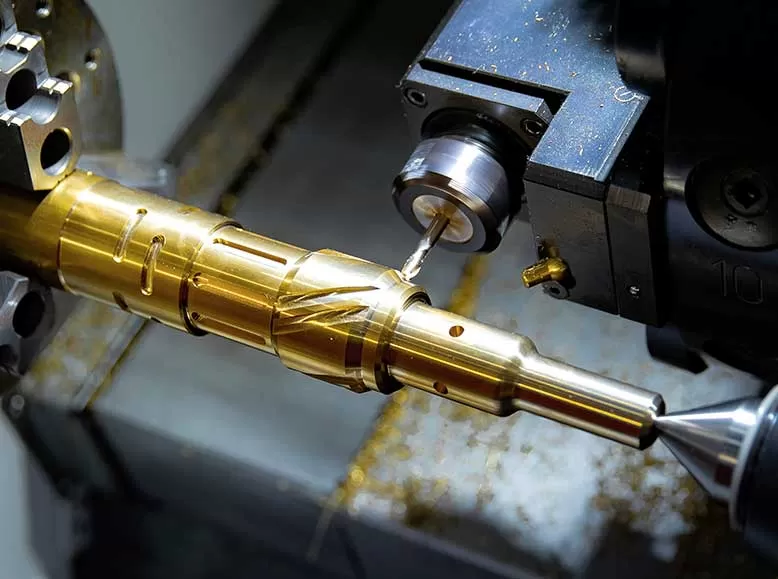
bronze
The color of bronze is usually cyan or green, but it is also partly gray or gold. Because bronze has excellent wear resistance, corrosion resistance and electrical conductivity. It can be machined into various shapes by CNC, including casting, cold working and hot working.
Aluminum bronze
Aluminum bronze is an alloy composed of copper, aluminum, and other alloy components. Aluminum bronze is harder and more corrosion-resistant than bronze, and also more difficult to machine than brass.
Phosphor bronze
Phosphor bronze is an alloy of copper, zinc, tin and phosphorus. Phosphor bronze is harder than brass and bronze, and easier to process than aluminum bronze.
The following is a table comparing the properties of different copper materials:
| characteristic | Pure copper | brass | bronze | Phosphor bronze | Nickel silver copper alloy | Beryllium Copper |
|---|---|---|---|---|---|---|
| elemental composition | Copper 100% | Copper+zinc | Copper+zinc+lead | Copper+phosphorus | Copper+nickel+silver | Copper+beryllium |
| Corrosion Resistance | good | good | good | good | excellent | good |
| Copper weight | 8.96 g/cm³ | 8.4 – 8.73 g/cm³ | 8.5 – 8.8 g/cm³ | 8.8 – 9.1 g/cm³ | 8.8 – 9.1 g/cm³ | 8.9 g/cm³ |
| durability | good | good | good | good | excellent | good |
| workability | excellent | excellent | good | good | good | good |
| solderability | excellent | excellent | good | good | excellent | good |
| Thermoelectric performance | excellent | good | excellent | good | good | good |
| copper content | 100% | 50-95% | 75-95% | change | change | change |
Copper material cost variance
The following is a price comparison table for different types of copper materials (in US dollars):
| Copper material type | Price range (per pound) | Price range (per kilogram) |
|---|---|---|
| Copper | $3.00 – $4.00 | $6.61 – $8.82 |
| Copper Alloy | $2.50 – $5.00 | $5.51 – $11.02 |
| Bronze | $4.00 – $6.00 | $8.82 – $13.23 |
| Brass | $2.00 – $4.00 | $4.41 – $8.82 |
| Phosphor Bronze | $5.00 – $7.00 | $11.02 – $15.43 |
If you are interested in the cost of metal CNC machining, please see this article 【Metal CNC Machining Cost】, which explains the cost calculation method and cost control skills in detail
Pricing and Selection of Copper Materials
Different types of copper alloys typically exist in different grades, so their prices are usually different. Although their prices may vary depending on the alloy, copper is often more expensive than brass and bronze because its copper content is 100%, and the decrease in the price of bronze may be due to the low copper content in the alloy. Similarly, brass is also the cheapest because it contains a lot of zinc. Because zinc is cheaper than copper, the price of brass has decreased.
Longsheng Technology provides professional precision CNC machining services at competitive prices and fast delivery times. Don’t Hesitate to upload your design file to start your project!
CNC makes copper machining easier and faster
CNC machining is a machine machining process automatically controlled by a computer program, which can automatically process various copper parts and workpieces. It can use different machine tools and cutting tools, such as milling machines, drilling machines, lathes, etc.
The programming of CNC machining can be done by a human programmer, or by computer aided design (CAD) software or computer aided manufacturing (CAM) software. The development of CNC machining technology has made the machining of various copper materials very simple and fast
Common problems in copper machining
As an excellent conductive material and corrosion-resistant metal, copper has good electrical and thermal conductivity, but there are also some unfavorable factors. Copper’s softness, for example, makes it easy to stretch, twist and deform; In addition, copper’s high hardness and good thermal conductivity also make it difficult to cut.
For example, there is a large heat problem in metal cutting, it is difficult to release heat immediately, that is, to form a high temperature area during the cutting process. These high temperature areas are easy to deform and oxidize the copper surface, resulting in reduced machining accuracy.
Another problem is that in copper machining , the metal surface is prone to producing cuts containing oxides and copper powder, which will not only damage the cutting tool, but also hinder the cutting quality.
How does Cnc machining solve these problems?
CNC machining technology enables high-speed and efficient copper machining through the use of high-precision tools and high-speed cutting technology. CNC machining technology uses high-speed rotary machining tools to continuously impact and wear materials, reducing the cutting heat during machining .
In addition, CNC technology can also use jet cooling methods to direct water or hydraulic pressure into the cutting area through high-flow water or hydraulic ejectors. This can quickly release heat and avoid oxidation and deformation of the copper surface. At the same time, jet cooling can also quickly remove the cutting material in the cutting area and keep the cutting area clean.
CNC machining of copper: advantages and disadvantages
Below we will explore the advantages and disadvantages of copper CNC machining.
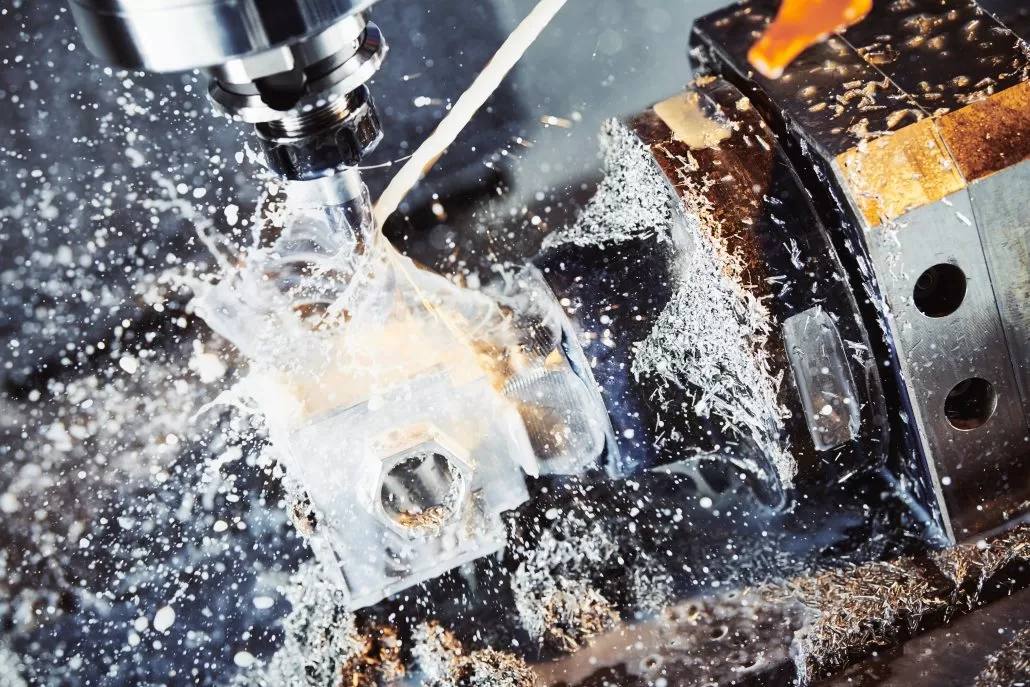
advantage Of CNC Machining Of Copper
1.Good workability: Copper has good plasticity and electrical conductivity, making it ideal for many applications. Whether you’re making complex parts or working with fine details, you can easily shape them into a variety of shapes.
2.Corrosion resistance: Copper has high corrosion resistance, especially when in contact with air and water. Therefore, copper CNC machining is suitable for parts and equipment that require corrosion resistance.
3.Good electrical conductivity: Copper is an excellent conductive material and has been widely used in electronic and electrical engineering. High precision conductive components and circuit boards can be manufactured by copper CNC machining.
4.Beautiful appearance: Copper has a unique appearance and color, with good decorative. Copper CNC machining can produce beautiful looking products, which are widely used in the field of art and decoration.
Disadvantages Of CNC Machining Of Copper
1.Flexible materials: Although copper has good plasticity, it has low hardness compared with other metal materials such as steel and aluminum. This can lead to excessive wear or deformation during machining .
2.High cost: Copper is a relatively expensive metal, its price is usually higher than other common metal materials. Therefore, using copper for CNC machining may increase the cost, especially for mass production.
3.Thermal conductivity: Although copper has good electrical conductivity, its thermal conductivity is also quite high. In some applications, the thermal conductivity of copper can be a challenge, especially in areas involving high temperatures or thermal management.
4.Oxidation problems: Copper oxidizes easily, forming a copper green color (cupric oxide), especially when exposed to water or chemicals. This may cause surface discoloration or reduce the corrosion resistance of the material.
Factors to Consider in Copper CNC machining
When machining copper CNC, the following factors need to be considered:
1.Select appropriate CNC machining equipment
Firstly, copper machining requires the use of appropriate CNC machining equipment. When selecting CNC machining equipment, consideration should be given to machining volume, cutting effect, machining accuracy, and capacity. Choosing appropriate CNC machining equipment can not only improve efficiency, but also improve machining accuracy and quality.
2.Choose the appropriate tool
In copper machining , the selection of cutting tools is also important. Due to the certain hardness of copper, in order to ensure the machining effect, it is necessary to choose high-quality and sharp cutting tools. It is better to use tungsten steel knife, Ceramic knife, PCBN knife and other high hardness materials. At the same time, in order to prevent copper deformation, appropriate clamping force is required, as either too tight or too loose can affect the cutting effect.
3.Fixation of copper material
Fixing copper materials on machining equipment is also important. If not fixed, the machining effect and quality of copper materials may be affected by vibration and changes, and the cutting tools or machine tools may be damaged. When fixing copper materials, pliers or fixtures can be used, or vacuum adsorption can be used for fixation.
4.Control of machining temperature
Copper machining also emphasizes temperature control. The heat generated during the machining can cause copper to expand or deform, thereby affecting the machining effect and quality, and even leading to machine tool deformation. Therefore, when machining copper materials, attention should be paid to controlling the machining temperature and selecting a suitable coolant for cutting to ensure that the copper material is not affected by overheating.
What should I pay attention to during machining ?
In the process of copper CNC machining , the following matters should also be noted:
1.In order to prevent scratches or other effects during machining , the surface of the copper should be fully cleaned before machining .
2.The quality of the copper surface should be monitored during machining , and the machining parameters should be adjusted in time.
3.After the machining is completed, the quality and accuracy of the processed products need to be re-checked.

Copper machining surface finishing options
The following is a list of standard surface finishing applicable to copper parts:
1.Polishing technology
Polishing technology Its advantages include fast machining speed, relatively low cost, and the ability to handle large surface areas.
This method is suitable for general copper machining , such as furniture, daily necessities, and other fields. But its drawbacks are also obvious: it will leave very obvious marks on the copper surface, which will have a negative impact on the glossiness and smoothness of the copper surface.
2.Oxidation treatment
Compared to polishing technology, oxidation treatment is a cleaner, more efficient, and accurate surface finishing method. The pre prepared chemical mixture can generate the same elements as the substrate material on the surface of copper parts to achieve the goal of controlling surface quality.
This method is mainly used for high-end products that require high gloss and uniform surface treatment processes, such as jewelry, mechanical watches, etc.
3.Sand blasting and chemical methods
Sand blasting is to use high-pressure gas, orange peel or other media sprayed from high-pressure spray gun on the copper surface to remove impurities, astigmatism and Copper(II) oxide on the copper surface, and finally make the copper surface smoother. Like sandblasting, chemical methods can also remove impurities on copper surfaces, making them smoother and increasing hardness.
Both sandblasting and chemical methods require highly specialized technical personnel, resulting in relatively high costs. Sandblasting and chemical methods are excellent methods for precision machining of copper parts in specific industries.
Find a suitable solution for oneself
When choosing the method on the copper surface finishing, it is necessary to comprehensively consider various factors such as actual shape, raw materials of the blank, production and machining requirements on the surface, and costs.
If you are a manufacturer of ordinary copper parts and require fast production and machining speed, then polishing technology is your better choice. If you produce high-end copper parts and have a certain economic strength, oxidation treatment may be your first choice. If you have production needs for copper parts in a specific industry, sandblasting and chemical methods are indispensable choices for you.
Check out this article 【What Are The Various Surface Finishing Processes】 to learn more about surface finishing
Copper CNC machining technology
Copper CNC machining technology involves cutting and machining copper through computer programs and automated equipment. Compared to traditional manual machining , it has multiple advantages. The following are common machining technology features for machining copper materials:
Turning Technology
CNC turning can complete complex geometric shapes, including axial and radial directions. This machining method is usually used to process circular or cylindrical copper parts. Because it can complete the machining of inner and outer diameters, compared to traditional manual lathes, it can improve production efficiency and manufacture high-precision and smooth copper parts.
Check out this article 【Manual Turning VS. CNC Turning: Which Is Better For Your Project】 to compare the advantages and disadvantages of CNC turning technology
Milling technology
CNC milling technology can complete the machining sing of various planes, surfaces, and edges. It can provide efficient and high-precision cutting and machining for different copper parts. This method is very suitable for large workpieces, but it is not recommended for small workpieces
How to choose
When choosing copper CNC machining, we need to choose the appropriate machining method based on factors such as the shape, size, required accuracy, and surface quality of the parts. If you need high-precision manufacturing parts, then turning is the best choice.
The specific shape you need will affect the type of milling cutter and cutting parameters you choose. Therefore, you need to find a trusted cutting tool supplier and machining service provider to determine the correct tool type and parameters.
If you are confused about choosing copper CNC machining technology, please ask Longsheng Technology for help. Obtaining our expert advice during the selection process can help you stand out from the competition. They will choose the most suitable machining technology for your project.
How to choose the appropriate copper material for my project
Copper materials are divided into two types:pure copper and alloy. Pure copper is a single element, while alloys are a mixture of copper and other elements. To ensure the success of your project, it is important to choose the appropriate copper material. When choosing, the following points should be noted:
1.Material properties
Different types of copper have different physical and chemical properties, such as pure copper having good conductivity and thermal conductivity, while copper alloys have higher strength and corrosion resistance. This requires selecting copper with appropriate performance for CNC machining according to project requirements.
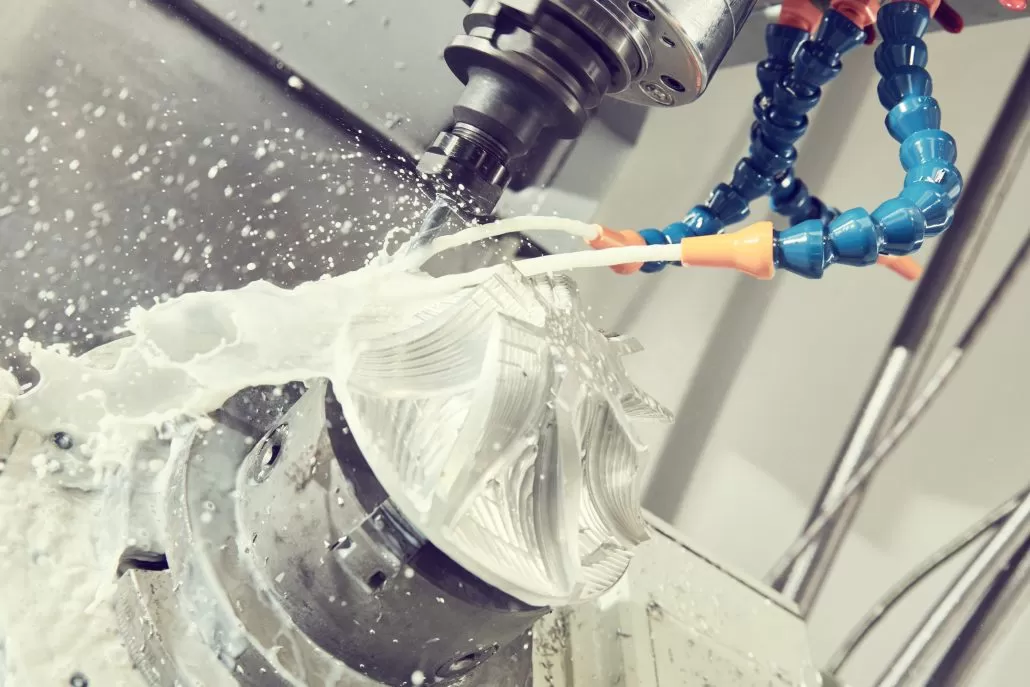
2.Processability
Different types of copper have different machinability, such as milling, turning, cutting, welding, bending, etc. Therefore, when selecting suitable copper materials according to project requirements, it is also necessary to choose appropriate machining methods
3.Strength requirements
According to the load and structural requirements of the project, choose copper materials with appropriate strength. Bronze and copper alloys usually have higher strength than pure copper. You can choose a copper material with appropriate hardness and strength to meet the requirements of the project.
Application of Copper CNC machining
From the above content, it can be seen that copper CNC machining technology can greatly improve production efficiency and product quality. The following are common application areas for copper CNC machining :
Electronic equipment
Copper has excellent conductivity and is commonly used in the manufacturing of electronic equipment. Through CNC machining , conductive components of circuit boards (PCBs) and electronic components can be made, such as wires, heat sinks, grounding plates, capacitors, resistors, integrated circuits, etc.
Automotive industry
Copper is used in the automotive industry to manufacture components such as engine components, brake systems, chassis components, transmission systems, electrical systems, radiators, and air conditioning systems. Some advanced car brake systems require highly accurate sensors to achieve safety and reliability. CNC copper machining can accurately manufacture these sensors and other important automotive parts.
Ship and aviation sector
Copper is often used in the fields of shipbuilding and aviation to manufacture ship propellers, turbines, and propulsion systems, as well as components of aviation engines and aircraft, such as blades, turbine discs, engine casings, etc.
Precision instruments
Copper can make precision instruments. For example, the instruments used to manufacture Artificial heart pacemakers, artificial joints and orthopedic surgery need high-precision and perfect machining . CNC machining can be used to make high-precision components to ensure the accuracy and performance of the instrument.
Longsheng Technology: Manufacturing copper CNC machining parts for you
Are you selecting suitable copper materials and machining methods for your next project? Longsheng Technology is a good choice. We specialize in the machining of various copper parts, from raw material procurement to the final product, all of which have undergone professional machining and strict testing. Our high-precision CNC machine tools can meet various customer needs, including the complex shapes, fine structures, and high requirements for surface finish of parts
In addition, we also provide manufacturing and prototype design services, including sheet metal fabrication, injection molding and 3D printing. You only need to fill in your contact information and specific requirements. After uploading the design file, you will receive a return quotation and DfM analysis within 24 hours. Our manufacturing process is transparent, and we can guarantee a price reduction of up to 20% for you. Contact us now, let’s get started!
conclusion
Through an overview of all the above content, it has been explained in detail that different types of copper have different machining needs and properties. Therefore, when selecting copper to be used for CNC machining, it is necessary to consider the purpose and characteristics of the components you want to manufacture. If you need more assistance in selecting copper materials and copper CNC machining, please contact our professional technical personnel. We are happy to provide you with more detailed guidance plans.
We hope this article is helpful to you and provides some guidance on selecting the right materials.
Author: Longsheng Technology
FAQ
Yes, the copper surface needs to be pre-treated such as sanding or polishing to ensure a high quality machined surface.
CNC machining can affect the hardness and plasticity of copper materials. However, consider the purpose of machining in advance and reserve enough margin to avoid unnecessary effects.
Users need to choose the appropriate copper material according to the specific application scenario, such as the required hardness, strength, wear resistance, corrosion resistance, electrical conductivity, thermal conductivity, etc. The machinability and cost of the material also need to be considered. Or you can contact our engineers to provide suitable solutions according to your project needs



Pingback: Online CNC Machining Quote | Low-Cost & High-Precision Parts
Thank you for your support and attention, we provide you with valuable content every day.